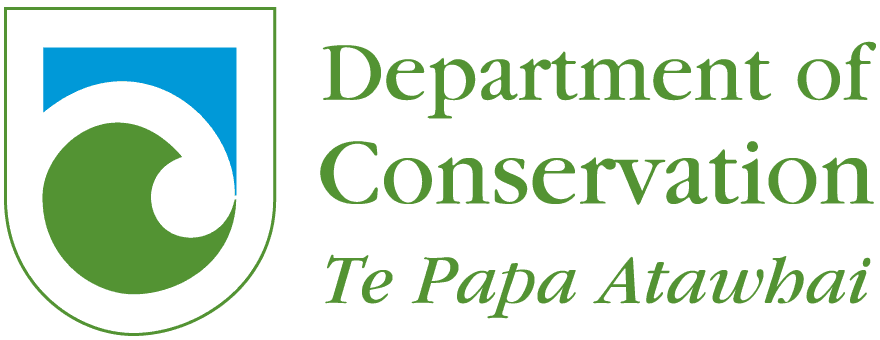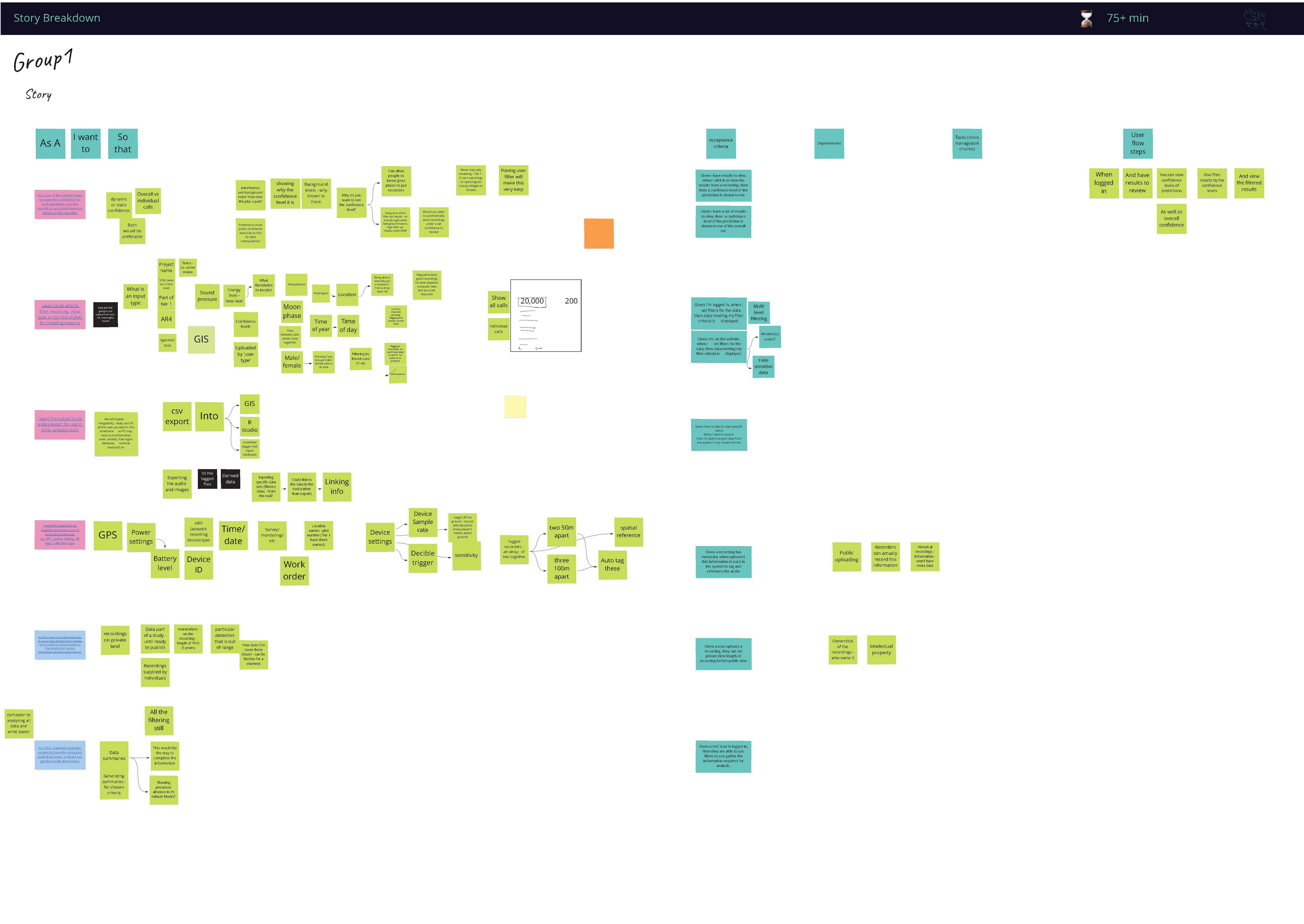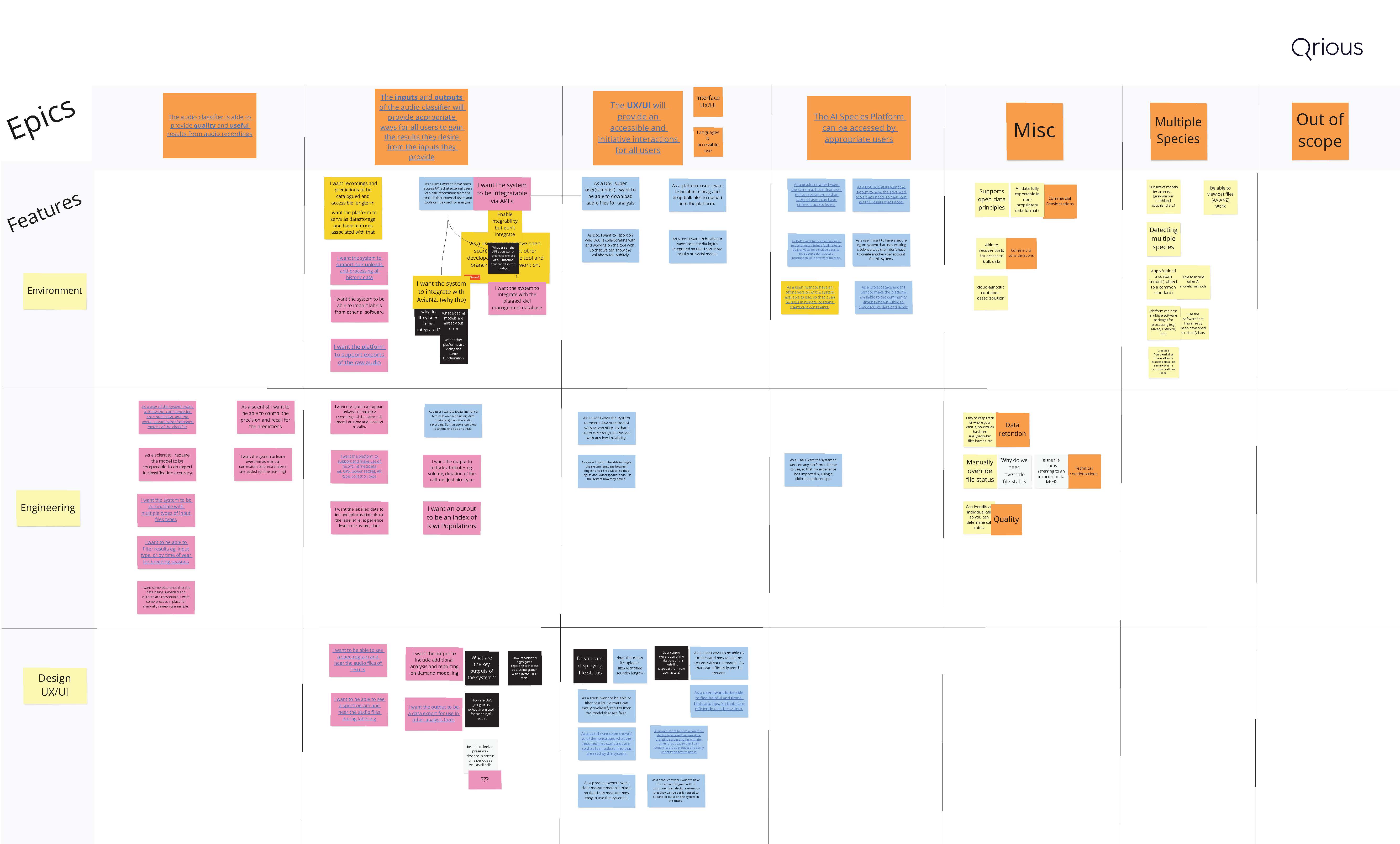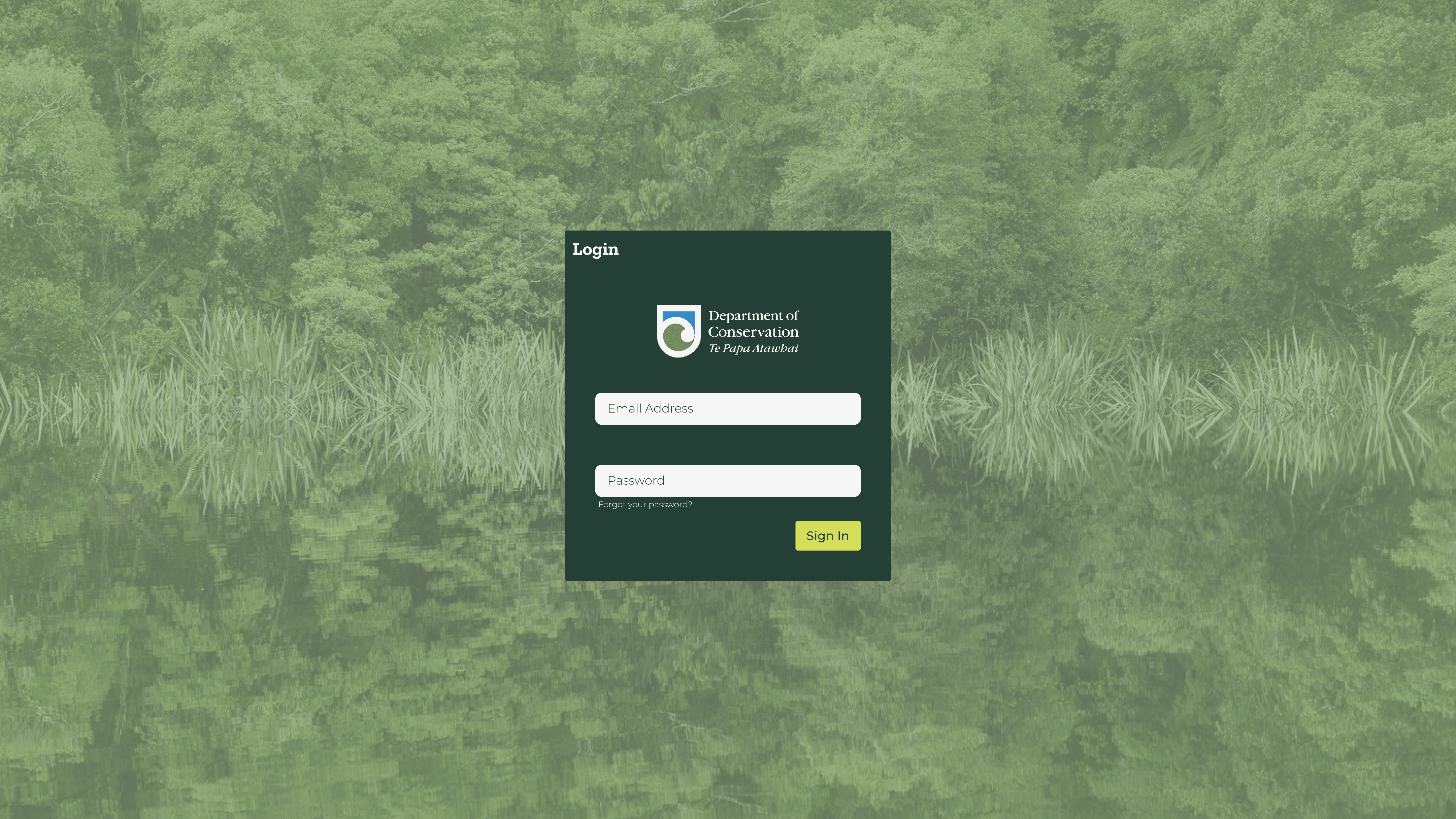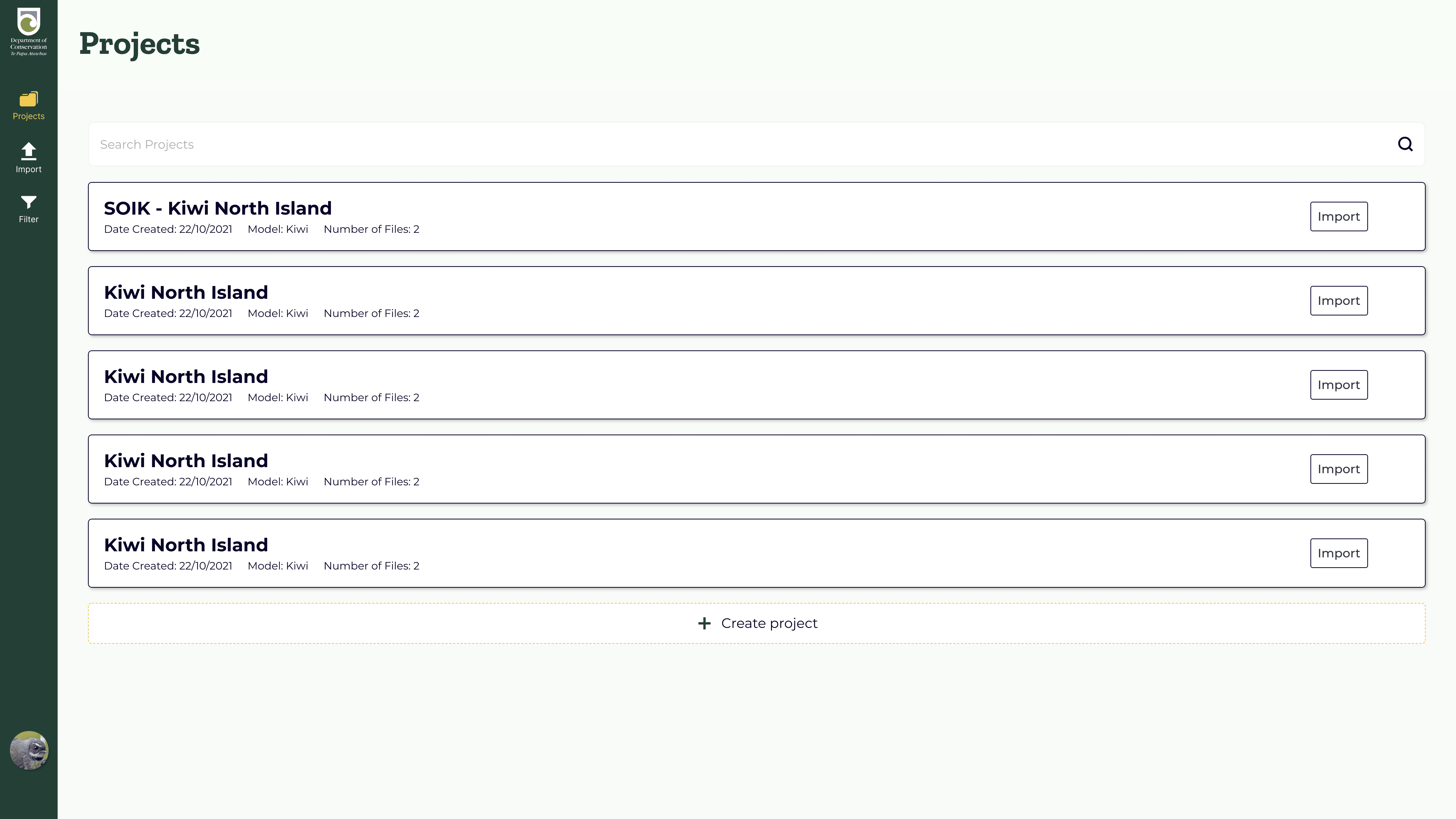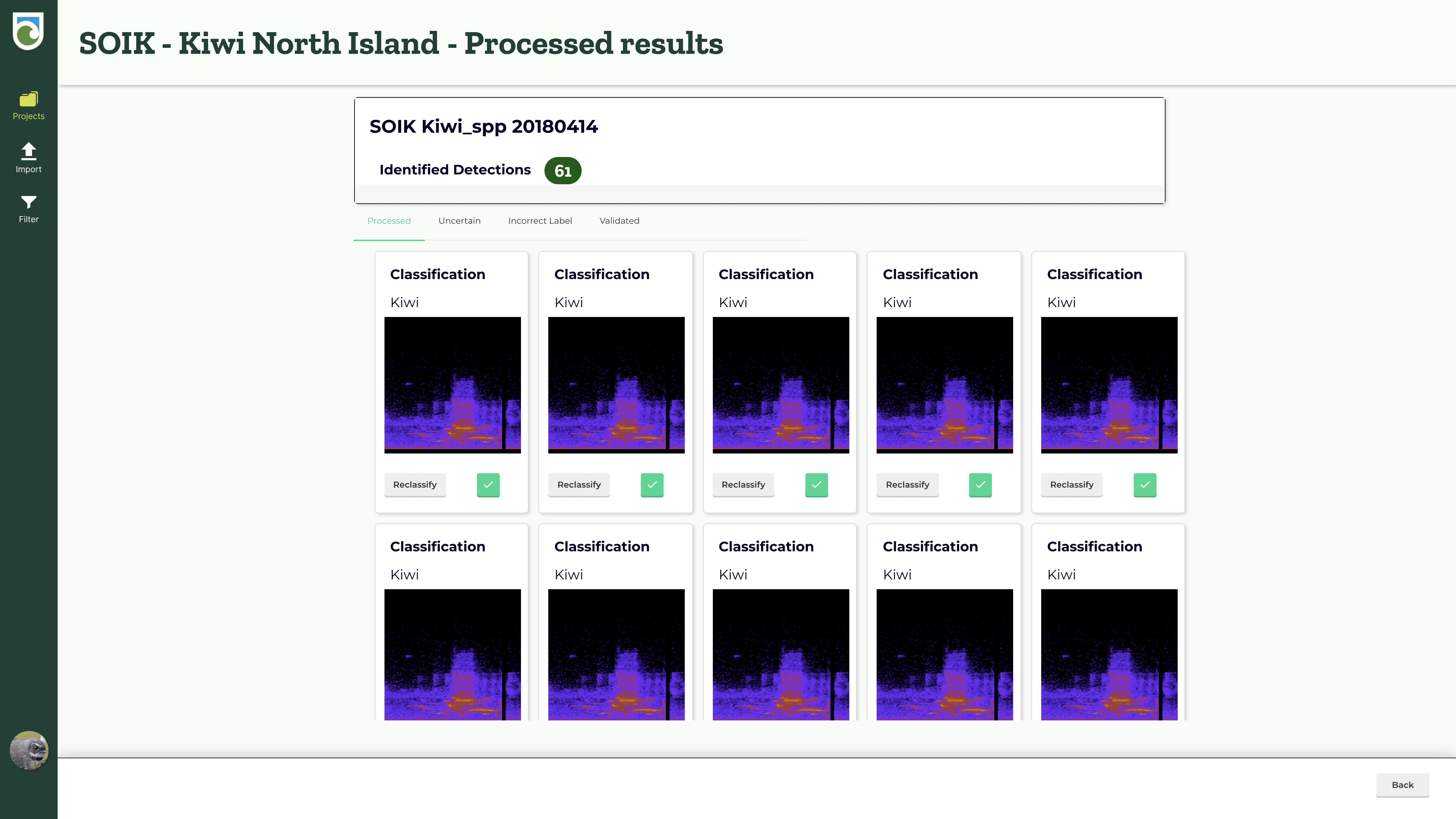Helping identify and protect New Zealand native birds.
Role: UX/UI designer
Dates: October 2020 - February 2021
The Department of Conservation (DOC) New Zealand is tasked with looking after parks and land around NZ. Their purpose is to ensure Papatūānuku thrives. In order to achieve this DOC needs to take innovative approaches to ensure the survival of NZ’s native birds and other species around NZ.
Through years of monitoring and conservation programs DOC have thousands of hours of audio recordings from bird monitoring programs. Currently DOC has to manually listen to the recordings and identify where a bird or animal is in the recording. There's technology now that can do that just as well as people

The process
Qrious previously developed an Artificial Intelligence algorithm that could identify Kiwi sounds in these recordings. DOC loved it and it has the potential to save them thousands of hours. The AI was developed as a proof of concept for DOC and needed to be developed into a platform to make this easily used by anyone to help identify birds, not just Kiwi.
That led to our engagement with DOC to design and develop a Species Identification platform and expand the AI algorithm. That’s where I came in to lead the design side, everything from workshop design, to wireframes, gathering feedback, high fidelity mock-ups, ticket writing and product owning the development.
We used a workshop approach to gather high level requirements and align our teams and DOC on what could be done. The workshops were conducted online with 30+ people to develop a collective understanding of how they desired a platform to function. I used workshopping techniques to develop what success would look like, the features required (including any details that the AI team need to take into account with the identifications - (time of day, how to break up the files)) and overarching open data principles and reporting capabilities.
From there I worked with our Data science team and another designer to develop a set of wireframes that could then be presented back and confirmed with DOC. Working through iterations and constraints to arrive on a design that could be developed into a clickable prototype.
This was once again tested and feedback gathered from DOC, our data science and development teams to ensure it can be feasibly made. This was then written up into development tickets and worked though with the development team to create the platform. The final product was deployed to DOC to test and successfully identify NZ birds in audio recordings.
Reflection
Working with a large number of stakeholders was a difficult thing to manage and resulted in some wasted time delving into rabbit holes that didn't need exploring. But did result in some great trust and relationships between parties. A simple minimal viable product was designed and developed that met the need however didn't push the boundaries of what could have been achieved, which was somewhat of a missed opportunity to deliver beyond expectations. I'm proud to have worked on this project and see it from end to end to help the birds of New Zealand thrive.
Next project




